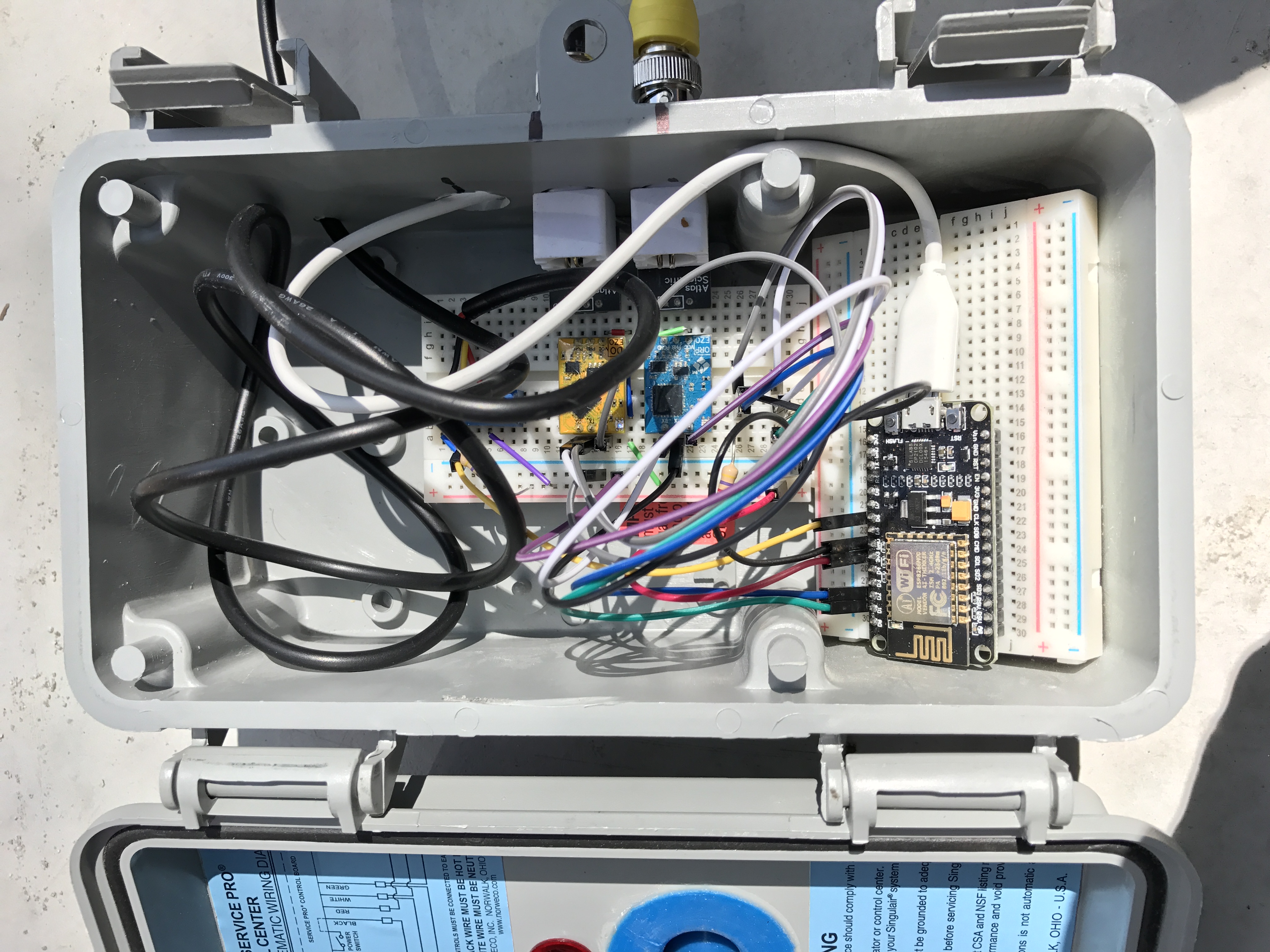sandbox-detecting-wastewater
This draft wiki page is a work in progress!
Wastewater is “used water” that’s created by households, cities, and industry. It ranges from sewage to surface runoff that can flow from roadways into storm drains. Untreated or under-treated wastewater can contain a variety of pollutants that can harm people and ecosystems when it’s released into the environment.
On this page, we’re collecting information on some of the clues that might indicate wastewater pollution in the environment, and ways to investigate them. Some methods assess general water quality conditions that can correlate with wastewater pollution, while other methods can more directly signal the presence of wastewater by identifying specific pollutants.
Detecting possible wastewater pollution
There’s lots of information (in English and Spanish) about what to look for in the comments of this question: What are some observable tell-tale signs of wastewater pollution?
If you’ve tried any of the approaches below to detect or document wastewater, please share your experiences and post a research note!
Change in water color or clarity
Why? Solid particles, chemicals, or microscopic organisms in wastewater can give it a color or cloudy appearance. When wastewater is discharged into the environment, you might see a discolored plume in a river or a colored residue on land.
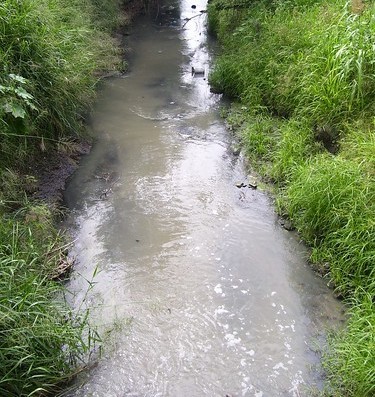
Cloudy looking stream water, Sustainable Sanitation Alliance, CC BY
METHODS:
Documenting visual changes in water color or clarity
Post your photos of possible wastewater pollution! / ¡Postea tus fotos de aguas posiblemente residuales! 📷
Post by @bhamster 2 | over 2 years ago
- Aerial photography and satellite imagery
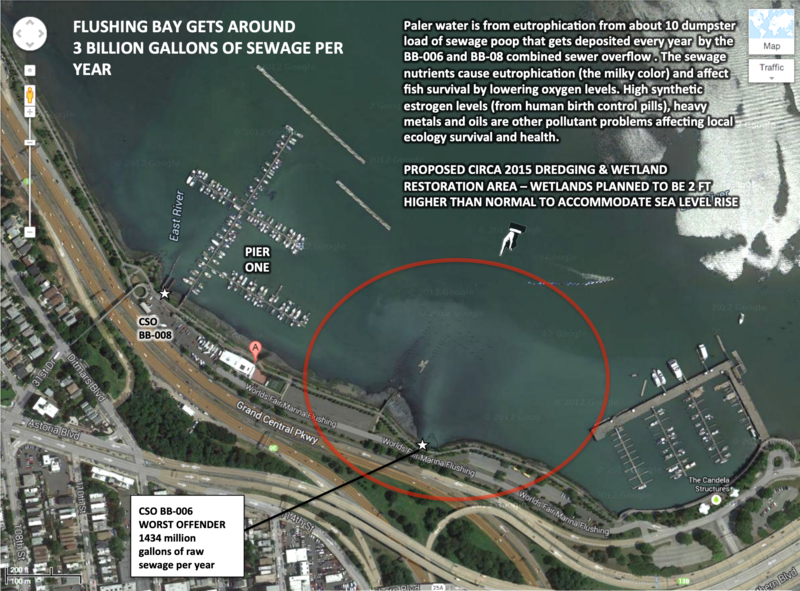
Satellite image showing discolored, cloudy water in the Gowanus Canal. From this slideshow by @eymund.
Documenting changes in water color/clarity with spectral imagery (might not be visible to human eyes)
- Infrared balloon image reveals Gowanus plume, and note this comment that the plume is likely flowing sewage sludge that shows up in the near-infrared range because of the bacteria and small algae in the sludge.
- Multispectral analysis of satellite images: like in the paper, “Tracking stormwater discharge plumes and water quality of the Tijuana River with multispectral aerial imagery,” by Svejkovsky et al. 2010.

Visible and near-infrared photos composited to reveal a plume of flowing sewage scum, originally from this note by @liz.
Measuring turbidity of water
Solid particles floating throughout the water (called suspended solids) increase its turbidity. Learn more about turbidity in this research note from @anngneal.
- The turbidity wiki page has a list of sensors and other tools that enable physically measuring turbidity
- Question: How do I choose a method for monitoring turbidity?

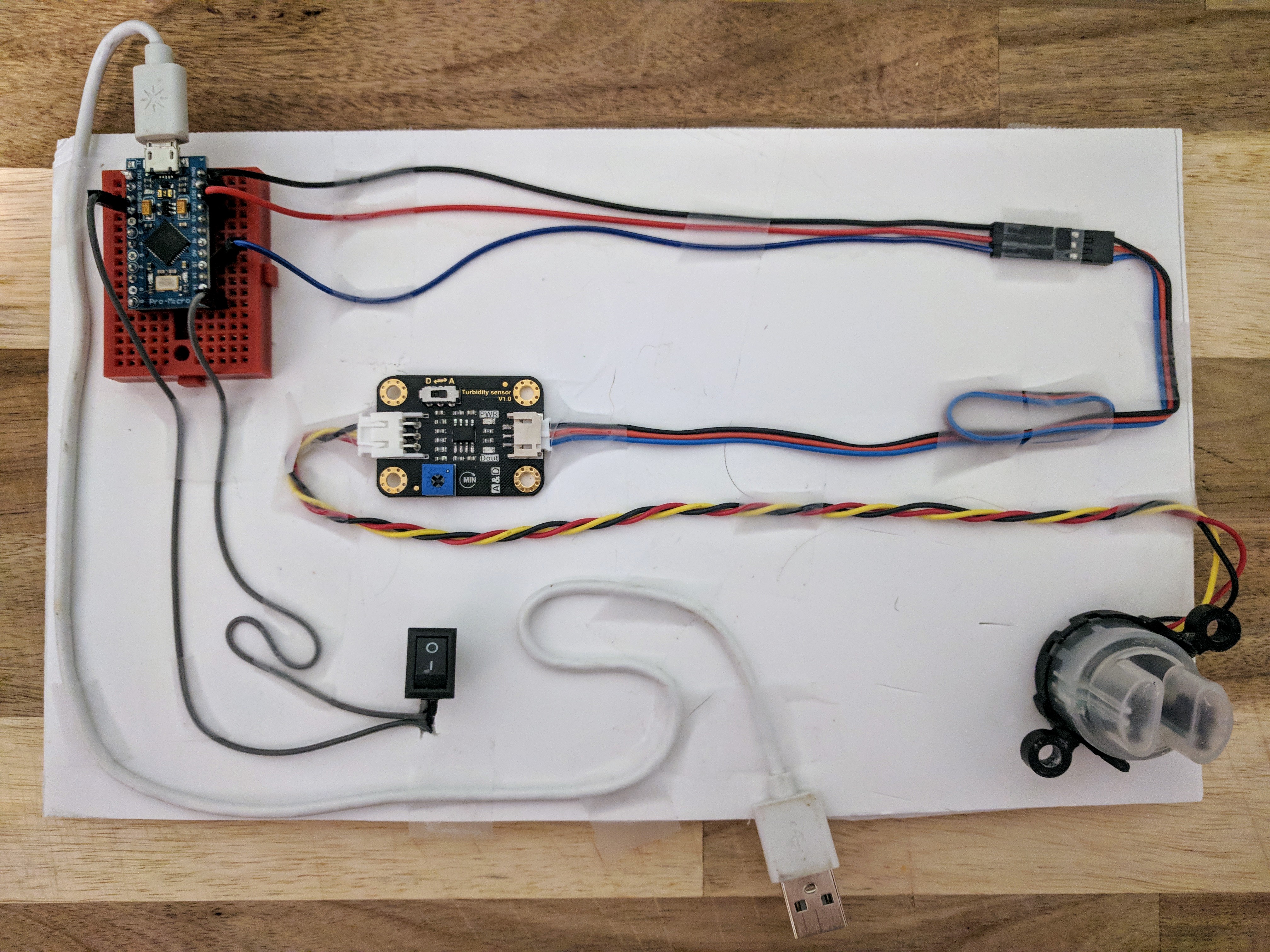
Left: Secchi disk for measuring turbidity, from this note by @anngneal. Right: Simple turbidity sensor prototype, from this note by wmacfarl.
Activities on turbidity
| Purpose | Category | Status | Author | Time | Difficulty | Replications |
|---|---|---|---|---|---|---|
| Turbidity sensor prototype | - | - | @donblair | - | - | 0 replications: Try it » |
| Photometer Kit idea | - | - | @programmer1200 | - | - | 0 replications: Try it » |
| Turbidity Sensor | - | - | @bhickman | - | - | 0 replications: Try it » |
| Photo Documentation of Turbid Waters for Advocacy | - | - | @gretchengehrke | - | - | 0 replications: Try it » |
| Willow Creek Water Quality Monitoring (EC and TDS) | - | - | @MadTinker | - | - | 0 replications: Try it » |
| Water Quality Testing At Turkey Creek | - | - | @Delaney | - | - | 0 replications: Try it » |
Activities should include a materials list, costs and a step-by-step guide to construction with photos. Learn what makes a good activity here.
Odor
Why? Clean water should have no smell or a slightly earthy smell. Other smells could indicate under-treated wastewater.
See this comment from @jesseslone about odors near wastewater discharge areas and what they might indicate.
METHODS
Methods and activities related to odor logging can be found here: https://publiclab.org/methods#odor
Activities on odor
| Purpose | Category | Status | Author | Time | Difficulty | Replications |
|---|---|---|---|---|---|---|
| Community-level Odor Mapping Site | - | - | @sarasage | - | - | 0 replications: Try it » |
| Citizen log v1 | - | - | @imvec | - | - | 0 replications: Try it » |
| Odor Log 1.0 | - | - | @imvec | - | - | 0 replications: Try it » |
| Online Odor Log v1.0 | - | - | @imvec | - | - | 0 replications: Try it » |
| Smells that Kill: How to Identify Odours | - | - | @kgradow1 | - | - | 0 replications: Try it » |
| How to Keep a Pollution Log | - | - | @kgradow1 | - | - | 0 replications: Try it » |
Activities should include a materials list, costs and a step-by-step guide to construction with photos. Learn what makes a good activity here.
Changes in water temperature
Why? Wastewater can be warmer than the waterbodies it’s dumped into. This includes sewage and wastewater produced from industrial processes.
METHODS
Thermal fishing bob
Sense changes in water temperature and display temperature differences with colored lights in the field. Take a long-exposure photograph to record the results!
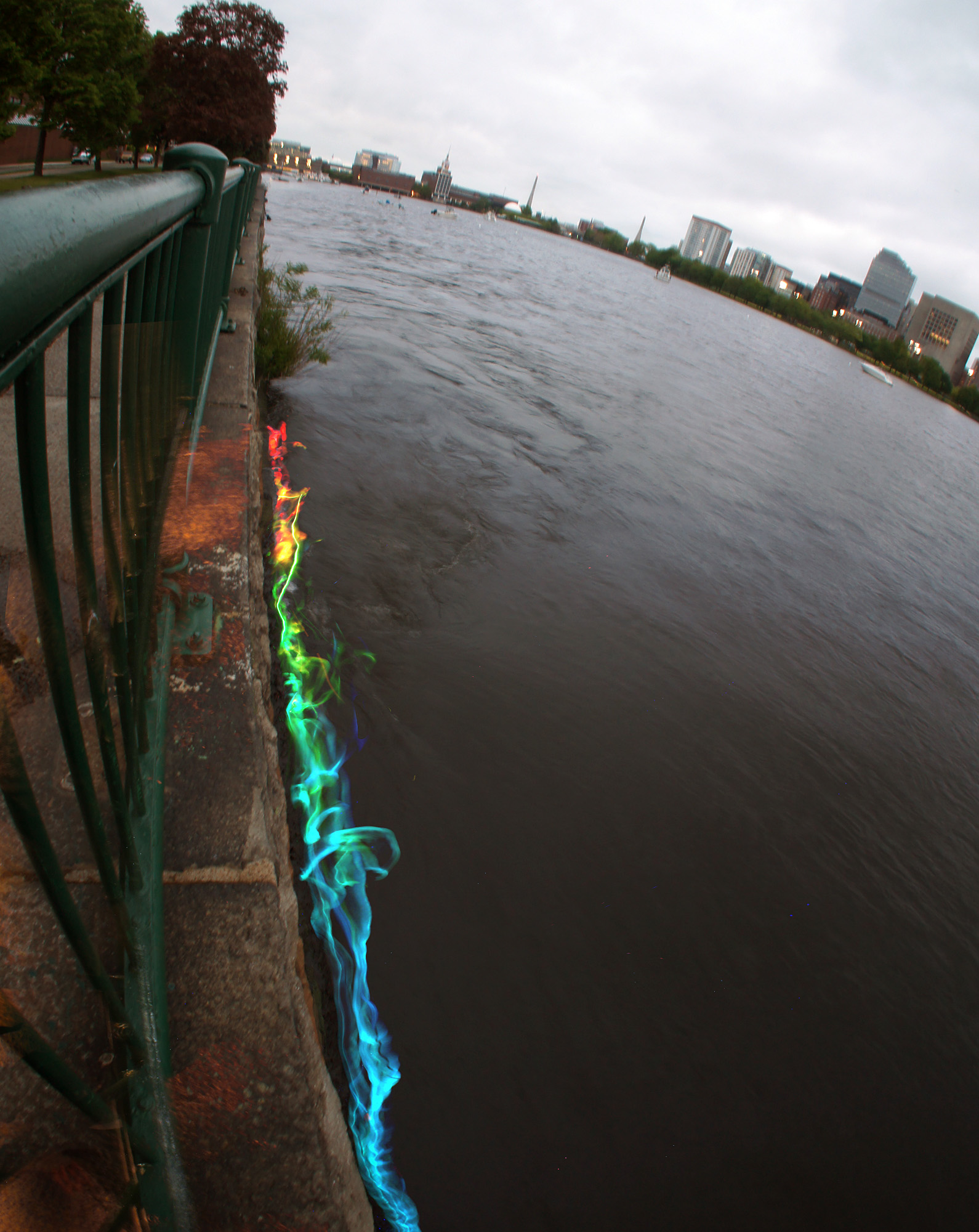
A long-exposure photograph of colored lights on a thermal fishing bob towed in the Charles River, Boston. The different colors indicate differences in water temperature near a power plant, which releases heated wastewater into the river. From this note by @Sara.
- About the thermal fishing bob and how to make one: https://publiclab.org/wiki/thermal-fishing-bob
- Successful Thermal Fishing Bob Test: Mapping the Kendall Power Plant Thermal Plume
Activities on thermal-fishing-bob
| Purpose | Category | Status | Author | Time | Difficulty | Replications |
|---|---|---|---|---|---|---|
| Thermal Fishing Bob: multiple inputs/outputs | - | - | @lperovich | - | - | 0 replications: Try it » |
| GO SCUM update | - | - | @liz | - | - | 12 replications: Try it » |
Activities should include a materials list, costs and a step-by-step guide to construction with photos. Learn what makes a good activity here.
Thermal photography
- https://publiclab.org/wiki/thermal-photography
- Detecting warmer water at wastewater outfalls with thermal photographs, as noted on pg. 27 of this guide for municipalities detecting illicit discharges of wastewater
Activities on thermal-photography
| Purpose | Category | Status | Author | Time | Difficulty | Replications |
|---|---|---|---|---|---|---|
| Kite Aerial Remote Sensing (KARS) - Thermal Infra-Red. | - | - | @John_Wells | - | - | 0 replications: Try it » |
| Analyzing Thacher Insulation: an Aerial Thermal Mapping Project | - | - | @NIKIBOPOLOUS | - | - | 0 replications: Try it » |
| Rent FLIR thermal infrared cameras at some Home Depots | - | - | @warren | - | - | 0 replications: Try it » |
Activities should include a materials list, costs and a step-by-step guide to construction with photos. Learn what makes a good activity here.
Conductivity
Why? Water that has more inorganic solids dissolved in it (like salts or chemical pollutants) generally conducts electricity better---it has a higher conductivity.
For example, salty wastewater (brine) associated with fracking can cause a spike in water conductivity (source: FracTracker).
Organic pollutants like oil, however, don’t generally conduct electricity well and may lower the conductivity of water.
“A failing sewage system would raise the conductivity because of the presence of chloride, phosphate, and nitrate; an oil spill would lower the conductivity.” - US EPA
METHODS
https://publiclab.org/methods#conductivity
Two examples:
Coqui audible water conductivity sensor
Activities should include a materials list, costs and a step-by-step guide to construction with photos. Learn what makes a good activity here.
| Purpose | Category | Status | Author | Time | Difficulty | Replications |
|---|---|---|---|---|---|---|
| Riffle Beta project - Methane Gas Sensor | - | - | @Bob | - | - | 0 replications: Try it » |
| Soaring Riffle | field-test | - | @cfastie | - | - | 0 replications: Try it » |
| Compost is hot, says Riffle | field-test | - | @cfastie | - | - | 0 replications: Try it » |
| How to bootload a Riffle #Arduino #water #science #tech | - | - | @zengirl2 | - | - | 0 replications: Try it » |
| In the heat of the pile | observe | - | @cfastie | - | - | 0 replications: Try it » |
| Blink a LED - Write a 'Sketch' and build a breadboard circuit for the Riffle | build | review-me | @pdhixenbaugh | 1h | medium | 1 replications: Try it » |
| Riffle test 1 | verify | - | @cfastie | - | - | 0 replications: Try it » |
| Riffle Device: Water Conductivity Sensor | - | - | @rebeccah | - | - | 0 replications: Try it » |
| Riffle campout | test-limits | - | @cfastie | - | - | 0 replications: Try it » |
| Riffle and Thermsistor | - | - | @pdhixenbaugh | - | - | 0 replications: Try it » |
Activities should include a materials list, costs and a step-by-step guide to construction with photos. Learn what makes a good activity here.
Indicator chemicals or components
Why? The presence of certain chemicals or living things in water can suggest pollution from wastewater.
METHODS
Detecting optical brighteners
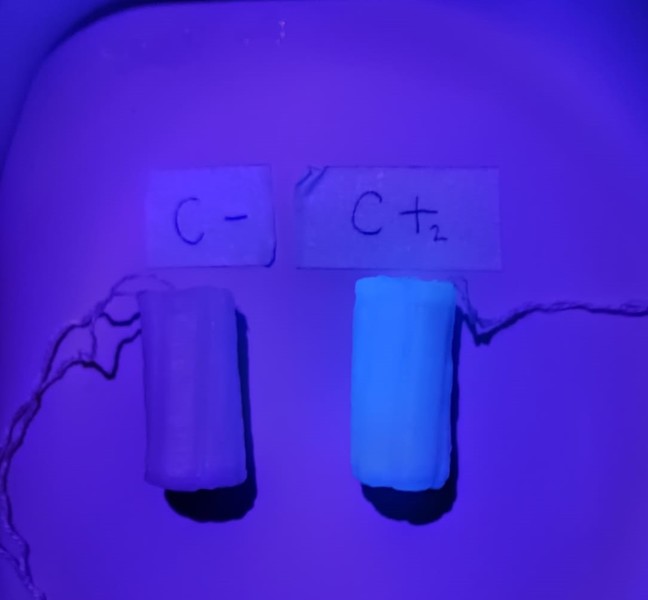
UV light makes a tampon exposed to optical brighteners glow brightly. In the positive control on the right, the tampon was soaked in laundry detergent. From this note by @alejobonifacio.
Organic waste and oxygen
Certain bacteria help to clean water by breaking down organic wastes, and they use oxygen in the process. Measuring the amount of oxygen in water and how readily it might be used can help create a picture of how much organic waste is present and how well it’s breaking down.
- Monitor transparency, dissolved oxygen, ORP, and ammonia from a river, by @shanlter.
- Live Dissolved Oxygen and Redox Potential Sensor, by @jesseslone. Using dissolved oxygen and oxidation-reduction potential (ORP) as a proxy for biochemical oxygen demand, a common indicator of organic waste pollution measured by wastewater treatment plants.
- There are also ways to use spectroscopy to detect organic matter (see below)
Do-it-yourself dissolved oxygen (DO) and oxidation-reduction potential (ORP) sensor for monitoring a small wastewater treatment system. From this note by @jesseslone.
Bioindicators and bioassays
Using living things to help indicate or measure impacts from polluted water. Changes in the survival or growth of certain plants, animals, and microorganisms in water can indicate worsening water quality.
- Sampling water and looking for microscopic organisms as living indicators (called bioindicators) of possible wastewater pollution, with the help of DIY microscopes: https://publiclab.org/wiki/bioindicators
- Exposing test organisms to sampled water and measuring growth: https://publiclab.org/wiki/bioassay
- Detecting fecal bacteria (e.g., enterococci and E. coli) in sewage: the common water contaminants wiki page lists a couple ways to test for fecal bacteria.
image here!
Spectrometry methods for wastewater grab bag
Lots of people at Public Lab are interested in spectrometry and have experience using spectrometers for environmental monitoring, so we’re collecting some approaches for detecting various things related to wastewater here:
Questions
Questions tagged with question:detecting-wastewater will appear here
| Title | Author | Updated | Likes | Comments |
|---|---|---|---|---|
| What are some observable tell-tale signs of wastewater pollution? | @bhamster | over 2 years ago | 1 | 11 |
Activities
Activities tagged with activity:detecting-wastewater will appear here
Activities should include a materials list, costs and a step-by-step guide to construction with photos. Learn what makes a good activity here.


